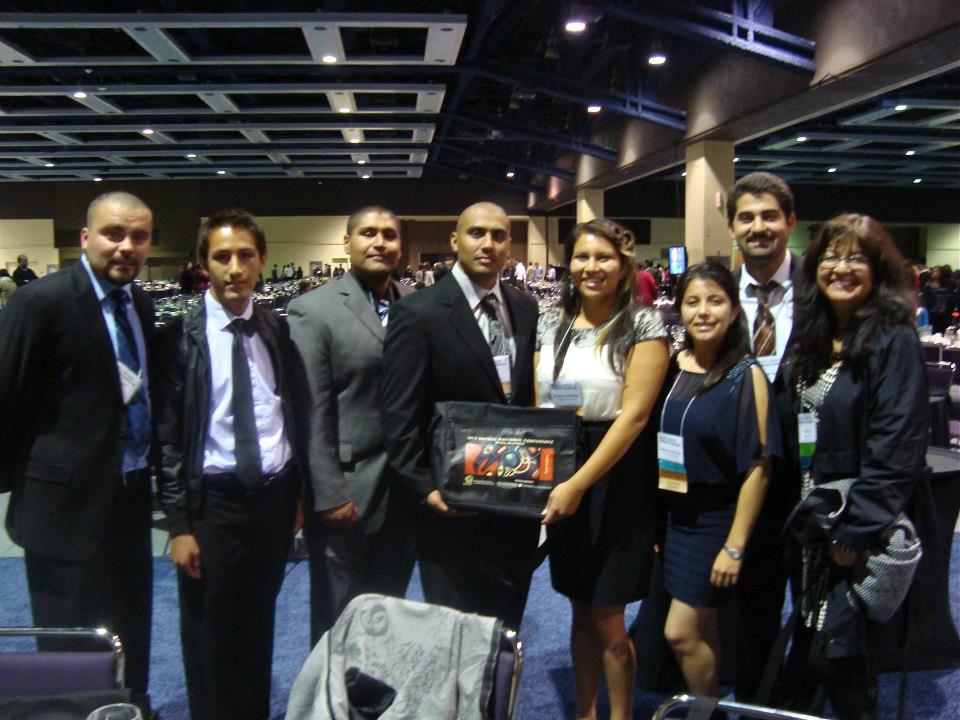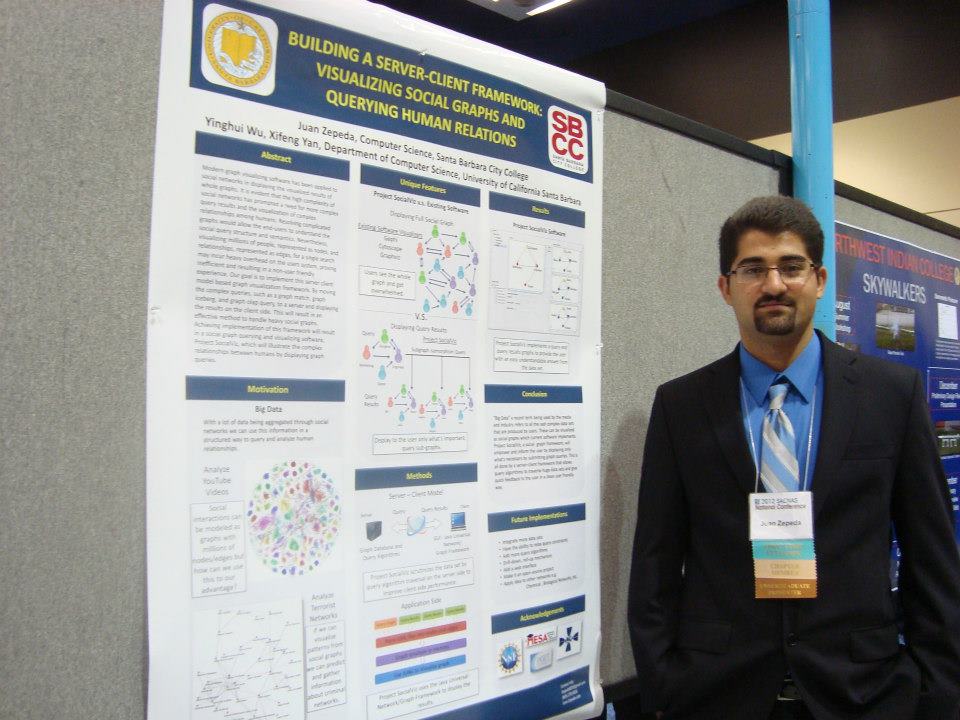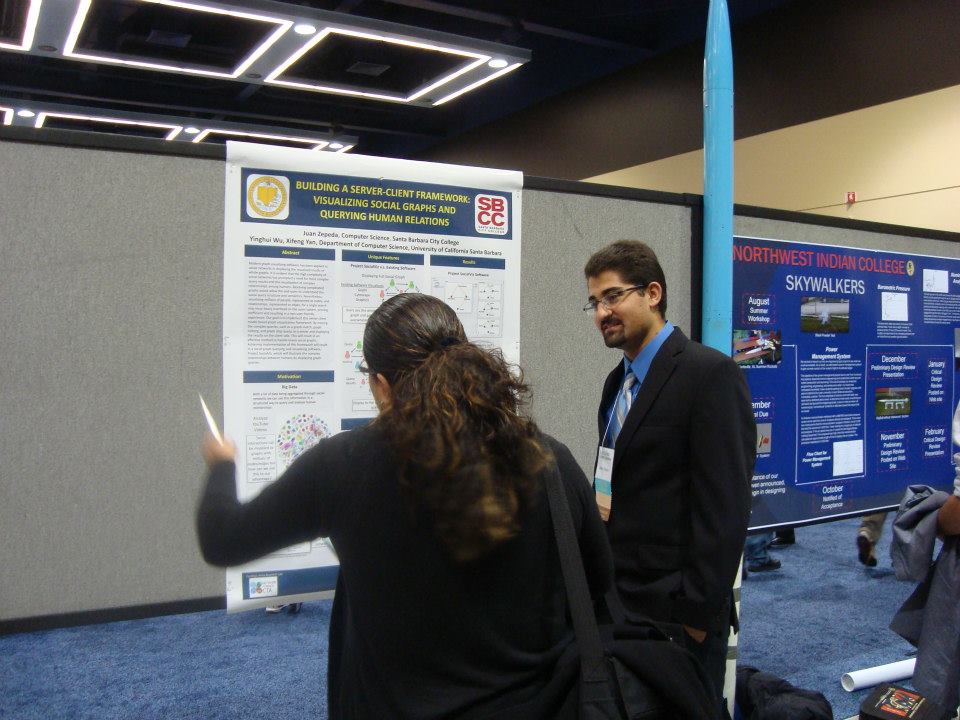Presenting Research at the SACNAS Conference
On October 11-14, 2012 I had a chance to travel to Seattle, Washington. I had the opportunity to present my research I had done through the INSET program at the University of California, Santa Barbara. Unfortunately, no award was won but experience was gained in poster presentations, networking, and traveling. My research was on Building A Server-Client Framework: Visualizing Social Graphs And Querying Human Patterns.
Modern graph and query visualizing software has been applied to social networks in returning simple relationship queries, such as neighborhood queries. It is evident that the large complexity of social networks has prompted a need for more complex query results and visualizing the complex relationships among humans. Resolving complicated graphs would allow non-computer science researcher’s to understand the social query structure and semantics. Visualizing millions of nodes to answer a search can have a heavy computational load on the users system, proving inefficient and resulting in a non-user friendly experience. We will look into developing a server client framework which houses a system that will rely on efficient graph querying algorithms which can handle millions of nodes and edges. By moving the complex queries, such as a graph match, graph iceberg, and graph olap query, to a server and displaying the results on the client side could result in an effective method to handle heavy social graphs. Java Servlets and Applets provide bi-directional communication and establish a possible solution with continuous community and industry support. Our goal is to implement this server client model. This would permit a load transfer among servers that could allow the system to answer, by visualizing a graph, on the client side without worrying about a computational load. Achieving implementation of this framework will result in a social graph querying and visualizing software, Project SocialViz, which will be used to visualize complex relationships between humans.
Poster can be downloaded here.




